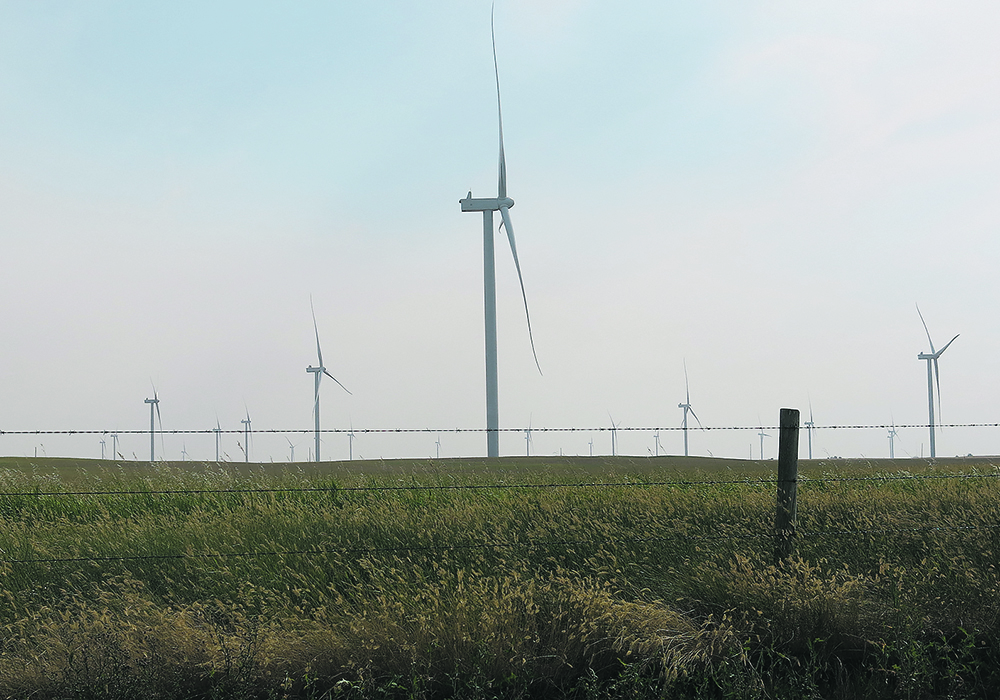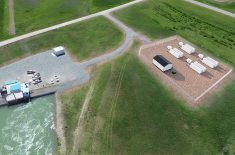Meetings about the sector’s future in the province hear from both proponents and opponents of continued development
MEDICINE HAT — The Alberta Utilities Commission panel has heard it is not necessarily a question of whether the province should move ahead with renewable energy development but where that should take place.
Virtual hearings with the unwieldy title, “Inquiry into the ongoing, orderly and efficient development of electricity generation in Alberta,” were held Dec. 13 featuring municipalities, companies and community groups, and the panel heard a range of opinions.
Cypress County is in the bullseye of renewable project development. The southeastern Alberta municipality is rich in both wind and solar, so it wants to preserve farmland and protect residents from potential liabilities.
Read Also

Saskatchewan puts crown land auction on hold
Auctions of Saskatchewan crown lease land are once again on hold.
That doesn’t mean it isn’t supportive of development of renewable energy, according to submissions from Cypress County planning supervisor Kaylee Brown.
“The county is very much supportive of the renewable energy sector contributing to the economic growth and diversification of the province in a planned, managed way,” she said. “The county also recognizes the need to protect landowners in securing alternative forms of income on agricultural lands.”
But municipalities should have an automatic voice in regulatory hearings on new developments because they have statutory land-use and municipal development plans and giving sole decision-making power to the regulator threatens to undermine that authority.
The county would also like to see the AUC expand its definition of “directly impacted landowners,” especially where the development is close to hamlets or villages.
While securities for reclamation are private matters between landowners and developers, Brown said the county supports a standardized system and that those securities begin being built up during the first year of operations.
“The county reinforces that it is crucial to accumulate funds throughout the life of the project and for the reclamation fund to be based on the amount equal to the future value of reclamation,” said Brown.
Simon Dyer, deputy executive director of the Pembina Institute, said that if rules are developed for energy production in the province, they should apply to all sectors of energy production, including oil and gas.
He said calls for stringent reclamation requirements for renewables seem more strict than Alberta’s historical requirements.
The moratorium on approval of new renewable energy development until the panel presents its findings appears to be unfair when compared to other developments of land in the province, he said.
While Dyer said municipalities should be involved in the development process, he stated they shouldn’t have a veto on projects, noting again the discrepancies between treatment of renewable projects versus those for oil and gas.
“Conventional oil and gas development covers 125 times the land area covered by current wind and solar plants in Alberta. Estimates of the unfunded oil and gas liabilities on the Alberta landscape range from $60 billion to $260 billion,” he said. “Moreover, oil and gas development has greater potential to cause environmental harms such as permanent damage to soil composition, water contamination and sour gas and fugitive methane leaks.”
He noted that despite this, the oil and gas sector has no requirements to post security for reclamation and suggested the province launch an inquiry into those issues.
David Vonesch, Skyfire Energy president, said the moratorium has already scared away investment in the renewable sector for large-scale projects as well as smaller ones such as those being developed by irrigators in the province through Irrican Power.
Such projects are owned by local community groups, which bring with them greater acceptance from the community and pose a lower risk of default on reclamation.
They are already challenged by economies of scale and the disproportionate impact of the same, if not greater, requirements of the regulatory process as larger projects.
He also noted the benefits for sheep grazing at solar sites.
Vonesch quoted a submission from a shepherd at the Travers Solar project, which said, “we can have a higher stocking rate per acre under panels compared to the native pastures in our area.
“The solar panels increase the productive value of our land when it comes to food production.”
He also noted solar panels can reduce water evaporation from the soil, as this is especially pertinent to areas prone to drought.
But when it comes to development of renewables in the Pincher Creek area, Angela Tabak, chair of the Riplinger Wind Concerned Citizens (RWCC) group said there has been enough already and the impacts of loss of a “pristine landscape” should not be understated.
The group takes its name from the wind project being proposed near Waterton Lakes National Park but Tabak said many of her organization’s concerns can be found across the province.
“We are grateful for the current government for recognizing what was happening in the province regarding renewable energy projects and their desire to get things right for Albertans,” she said.
“I would not be here and the RWCC would not exist if not for the fact my community has been drug into a fight for its wellbeing by a large power generator company and their proposed project. As of today, this project will include 47 Calgary tower sized turbines, a sub-station and 45 kilometres of transmission lines, while this project has been described as the poster child of everything that is wrong with renewable energy project siting in Alberta.”
Tabak said the project will destroy the scenery of the region while the concrete bases of the turbines won’t be required to be fully removed at the time of reclamation, causing potential further loss of native grasslands.
The AUC will move into its second phase of the inquiry in the new year.
















